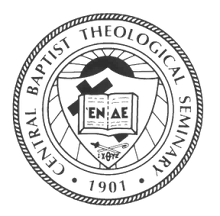I had the opportunity to teach Sunday School on
Ascension Sunday in my Jubilee Class at Prairie Baptist, where they manage to
keep me on the roll despite my frequent absences! The celebration of Ascension is sorely
neglected in the liturgical holidays, and I think I nearly overwhelmed my friends
with pent up theological musings. At
least they do not have to endure a theology exam from me!
 |
| Copley, John Singleton, 1738-1815. The Ascension, from Art in the Christian Tradition, a project of the Vanderbilt Divinity Library, Nashville, TN. |
I began by simply
asking the location of the Risen Christ.
Christian theology has done a better job dealing with time than
space. As students of the Bible we are
rather shackled to the biblical cosmology with its “heaven is up and hell is
down” structure.
Their answers demonstrated theological
sensitivity and curiosity, honed from years of faithful reflection. They
affirmed that Jesus, the Risen Christ, is with God; Jesus is with us when we
gather; Jesus is in our hearts; Jesus meets us in the breaking of bread; and,
Jesus is throughout creation, working where he is not acknowledged as Lord. Pretty good answers, indeed.
 |
| Ascension, from Art in the Christian Tradition, a project of the Vanderbilt Divinity Library, Nashville, TN. |
Then we examined
the ending of Luke and the beginning of Acts to try to understand what ascension
can possibly mean in a post-Galileo, post-Faraday, post-Einstein, and post-Hubble
cosmos. Luke’s story of Jesus being
“taken up” does not mean he is the first astronaut, looking for God in the long
inter-galactic voyage toward heaven. It
may be that heaven and earth are not so far apart after all.
There is
theological heft in this narrative, which is often overlooked because we have
not attended to what is really going on as Luke concludes the gospel and sets
us up for the stunning action of Acts.
What is the meaning of the departure of the incarnate one as a bridge to
the outpouring of the Spirit? Presence and absence are intertwined as we
observe the cessation of resurrection appearances and the coming of the Spirit
in power.
The ending texts of
Luke and the opening of Acts repeat the scene of Jesus departing. These are scenes of blessing, and his
ascension ensures that resurrection has actually occurred. No searching for the body need occur. Jesus has entered into God’s eternal realm.
I find the words
“taken up” (see Luke 24: 51; see also Acts 1:9) particularly important. The cloud, a shimmering metaphor for the
presence of God, is actively moving Jesus from the existence of earthly life to
resurrected life. Ascension completes
the resurrection, and we recall that John’s Gospel combines resurrection and
exaltation, also a dimension of ascension.
It is common to
hear people claim that Jesus is “going back home.” Actually, this world is his
home. The word has become flesh. The eschatological return of Christ will really
be his homegoing. Of course, Jesus is
from the Sovereign One, but incarnation is a truly earthy phenomenon. That the Risen Christ dwells both in the
presence of God and with the gathered community, his body, tells of the
enduring significance of embodiment.
The ascension also
offers a clue to our own hope of life beyond death. Jesus’ departure has opened a new a living
way, and we live with confidence that he marks out the pathway.
Molly T. Marshall
Central prepares learners to be reliable theological guides for the church.

No comments:
Post a Comment